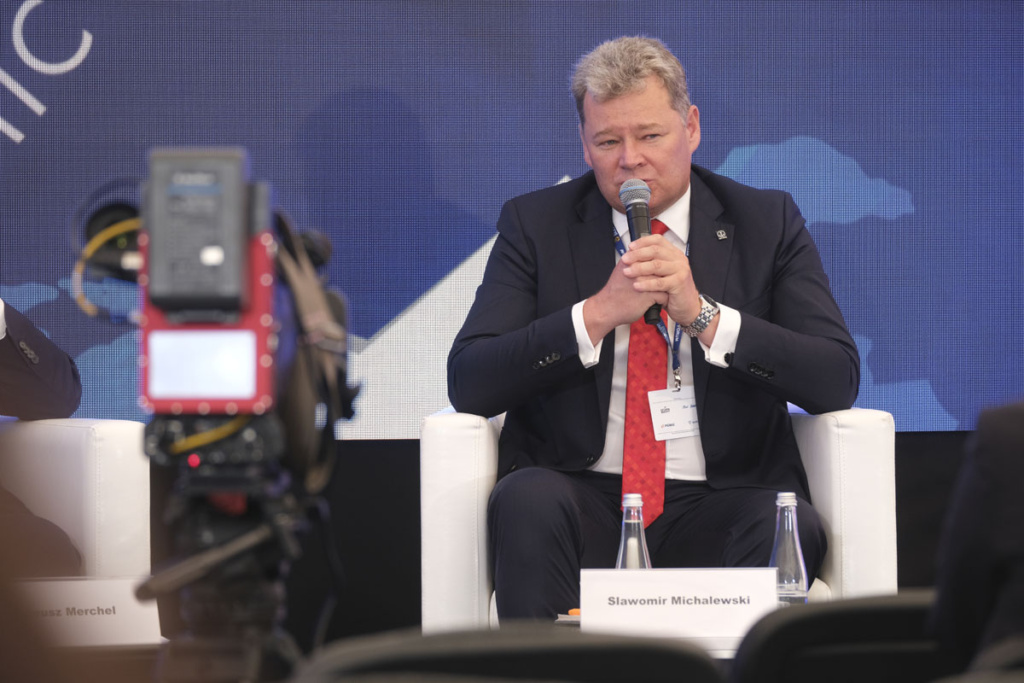he coronavirus pandemic and the war in Ukraine are the two factors that have most affected Europe’s trade routes in recent years. Few people are now talking about an overland link to China. Instead, alternatives for transporting Ukrainian grain are emerging – mainly through the Baltic and Black Seas. The directions of raw material transportation are also changing, as Russian pipelines are being replaced mainly by shipping. The pandemic has also affected urban mobility. What other changes are to be expected and how should European countries respond to them?
As the moderator of the discussion, MP Jerzy Polaczek, noted at the outset, it is difficult to imagine transportation without infrastructure. However, its creation is associated with costs – and these are increasing all the time. There are many reasons for this, but the main ones are well known – the coronavirus pandemic and the war in Ukraine. According to Ireneusz Marchel, president of PKP Polskie Linii Kolejowe S.A., there is 10 to 15 percent less investment because of this.
Bidding is a form of gambling. Nonetheless, on average, 50-100 percent of tracks are given away as part of the modernization of pre-port stations, which means that more trains will be able to pass,” said Ireneusz Marchel.
Parameters can and should be improved all the time. According to Slawomir Michalewski, Vice President of Finance at the Port of Gdansk Authority, the real test for the existing infrastructure was the outbreak of war.
We exported Ukrainian steel, grain. Our infrastructure was not prepared for such large volumes in such a short time. Fortunately, this infrastructure is coping with it. Among other things, talks are underway on a floating gas terminal in Gdansk,” Slawomir Michalewski said.
The representative of the Gdansk port also recalled the Gdansk-Odessa connection, which has been intensively discussed especially in recent months, as well as an additional grain silo.
Adrian Mazur, director of the Transport Strategy Department at the Ministry of Infrastructure, pointed out trends in infrastructure planning. In his opinion, not only imports from Ukraine, but also exports accompanying the country’s reconstruction after the war should be taken into account.
There was a lack of infrastructure on the eastern flank of NATO and the European Union. This is served by the Via Carpatia corridor, which has been built, Rail Baltica, plus the Rzeszow airport. This is needed in peacetime, but – God forbid – in case of war it will be crucial,” said Adrian Mazur.
Ireneusz Marchel of PKP Polskie Linii Kolejowe S.A. assured that the construction of the Rail Baltica route connecting Lithuania, Latvia and Estonia with Poland is well advanced. Of the 380 kilometers running through our country, 180 have already been completed, and the remaining sections are under construction.
It is assumed that 2028-2029 will be the year when the entire Rail baltica will be completed. Work is also underway in the Baltics,” declared CEO Ireneusz Marchel.
Slawomir Michalewski reminded that the most important thing at the moment is sea transportation.85% of world trade moves by sea, and 50% of the European Union’s population lives in the coastal belt. This shows the potential in front of Polish ports and Polish shipping,” said Slawomir Michalewski of the Port of Gdansk S.A..
There is also ecology behind sea transport. It is currently the least carbon-intensive, accounting for only about 3% of carbon dioxide emissions.

